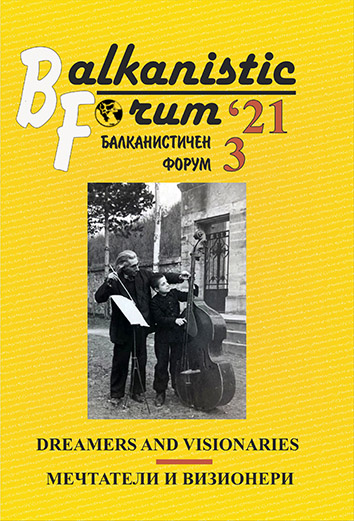Ideology and utopia: the national state structure of the USSR (presented on the example of the North Caucasus territories)
Ideology and utopia: the national state structure of the USSR (presented on the example of the North Caucasus territories)
Author(s): Tatˈjana Aleksandrovna Nevskaja, Alla KondrashevaSubject(s): History, Recent History (1900 till today), Special Historiographies:, Interwar Period (1920 - 1939), Post-War period (1950 - 1989), History of Communism
Published by: ЮГОЗАПАДЕН УНИВЕРСИТЕТ »НЕОФИТ РИЛСКИ«
Keywords: North Caucasus; Marxist theory; social development; state-territorial structure; ethnos; nations; types of ethnic communities; remnants; self-determination; autonomy; culture; The Mountainous Republic
Summary/Abstract: The model of the national-state and territorial structure of the USSR was implemented in strict accordance with the Marxist-Leninist theory of socioeconomic formations. According to this theory, every society goes through several stages of development: the primitive system, slavery, feudalism, capitalism, and communism. This is a naturally progressive process. Based on the works of Engels, Soviet scientists created a theory of the development of ethnic communities. Each formation had to correspond to a certain type of ethnic group. Guided by the "right of nations to self-determination," each nation was to receive its own statehood.This model existed before the collapse of the USSR. Since the 1980s it began to crumble, various ethnic groups, or rather their elites, were dissatisfied with their status. The autonomous regions of the North Caucasus began to transform into republics. The republics wanted to get the status of an ally. Administrative transformations did not improve the economy and living standards but on the contrary, led to increased bureaucratic growth. However, National Societies believed that the key was to appoint “their own” (a person with whom they had an established relationship and understanding) boss. Different peoples within the same autonomy often clashed. At the end of the twentieth-century tensions grew in the North Caucasus. It became obvious that the formation of territorial units along ethnic lines did not justify itself, however, this structure is preserved at the present time due to the fear of destabilization of the situation.
Journal: Балканистичен Форум
- Issue Year: 30/2021
- Issue No: 3
- Page Range: 288-302
- Page Count: 15
- Language: English
- Content File-PDF

